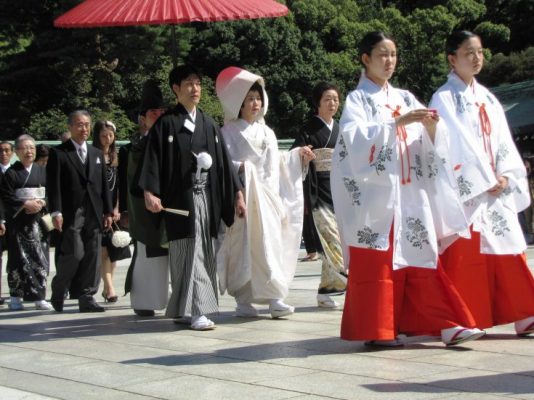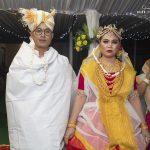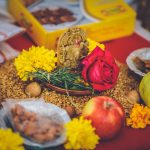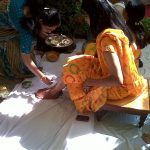Japan is an island country located in East Asia with a long and rich history of rituals and traditions. Everything the Japanese people do has a reason and history behind it. So it is no surprise that a traditional Japanese wedding has many important traditions and rituals passed down from generations. Let’s find out about these Japanese wedding customs and their importance in this article.
Japanese Pre-Marriage Traditions
A wedding ceremony is a formal event and usually private, with only close family members and a few guests attending. A traditional Japanese wedding ceremony happens in Shinto style which means it is performed by a Shinto priest and in a Shinto shrine. Along with Shinto-style, a Japanese wedding ceremony may be done in a Buddhist, Christian, western or non-religious style. The Japanese traditional style wedding is commonly performed at a Shinto shrine or Buddhist temple and the Japanese traditional wedding is called “Shinzen Shiki”. Whereas the western style wedding is typically done at a Christian church or wedding hall. The Japanese culture wedding traditions can differ depending on which Shinto shrine the wedding is taking place.
In Japan, the wedding ceremony and being legally married are two independent events. For couples to be legally married, they need to register with the city or municipal office and they can have a wedding ceremony before or after registering as a married couple.
Yuinou: This is the Japanese betrothal ceremony but this is also an engagement ceremony for the modern couple. The two families come together and there is an exchange of gifts and money. Gifts range from Shiraga, a thread of hemp representing the couple growing old and grey together, to a folding fan, representing future wealth and growth in the Japanese wedding culture.
Japanese Marriage Traditions
Purification: The priest purifies the couple so that evil spirits are warded off.
San San Kudo: During the Japanese wedding ceremony, the bride and groom take three times of sake from three different cups called sakazuki. Then their parents take sips of sake representing the new bond between the two families. Each sip of sake has a unique meaning. The first three illustrate the three couples, the second three sips symbolise passion, hatred, and ignorance and the last three sips mean freedom from the three flaws mentioned. The word “Su” means “three”, “Ku” means “nine”, and “Do” means “to deliver.” The number nine is considered lucky in Japanese culture. The Japanese style wedding ceremony ends with symbolic offerings to the Shinto gods.
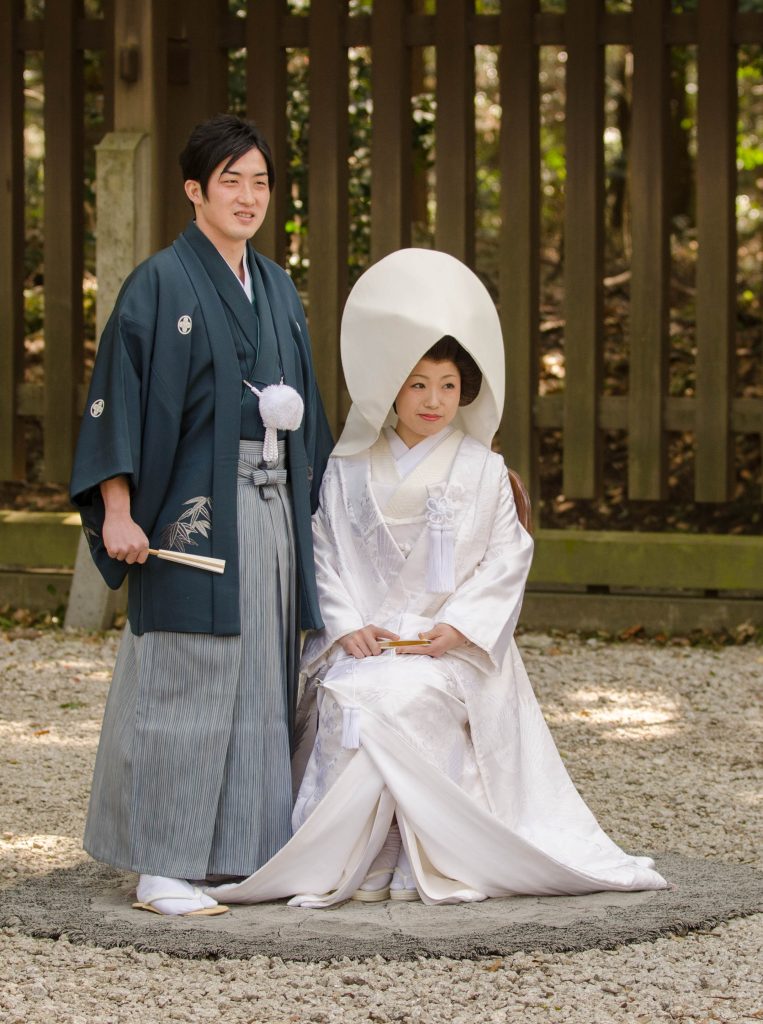
Japanese Post-Marriage Traditions
Reception: Next in the Japanese wedding tradition is the wedding reception which is highly formal. The couple sits on a stage while amusing stories are told and toasts are raised. For food, items like sushi, red rice, seaweed, sake, seabream, prawns, brown algae, etc. are served. The bride may change clothes for the reception and some are known to change changes three or four times.
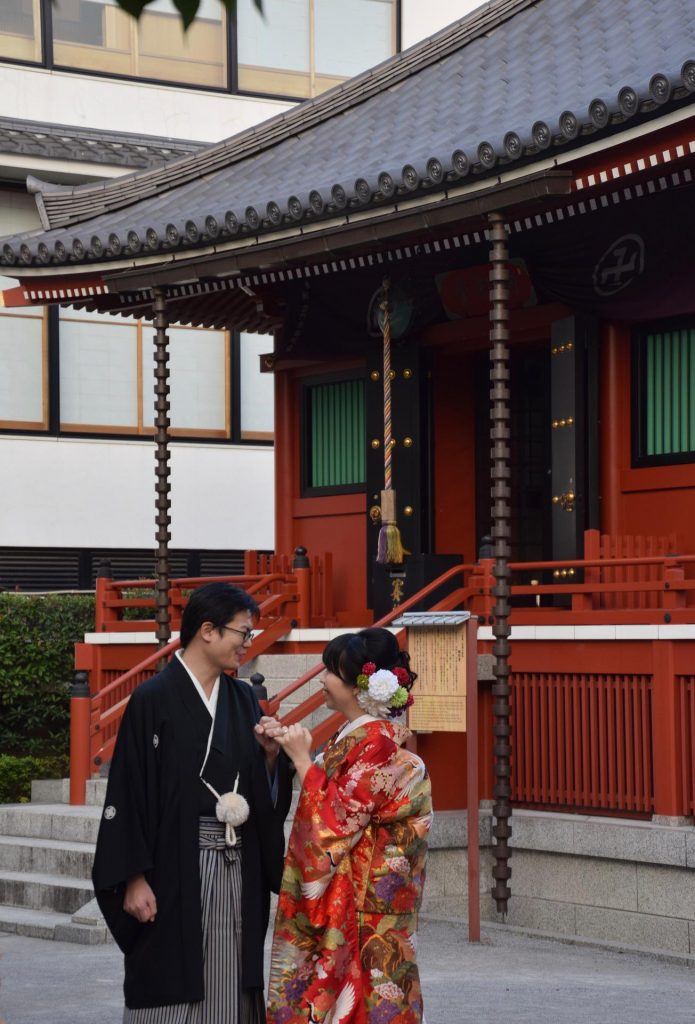
Kagami-Biraki: While the Japanese style wedding reception is ongoing, there is a ceremonial sake opening. The lid of a sake barrel is broken open and all the guests are served sake.
Shugi-Bukuro: During the reception, guests give a cash gift in an envelope to the couple. The envelopes are elaborately decorated and designed especially for wedding money gifts. Guests need to be sure not to buy the wrong one like the one for funerals. The cash gifts being at ¥10,000 and can go up to¥30,000, ¥50,000 or ¥100,000, depending on the relationship between the guest and families.
Hikidemono: This is a gift from the bride and groom to the guests; these wedding souvenirs are a declaration of their hospitality and gratitude.
Japanese Wedding Attire
The couple wears a kimono. For the bride, a traditional Japanese wedding dress is white kimono called a “shiromuku”. For a headdress, the bride can either wear a tsunokakushi or wataboshi. The groom wears kimono, hakama (trousers), and haori (overcoat), usually in black or grey colour and has his family’s symbol on them. The bride may change into an “uchikake”, a colourful, embroidered kimono, a Western-style evening gown or a party dress for the wedding reception.
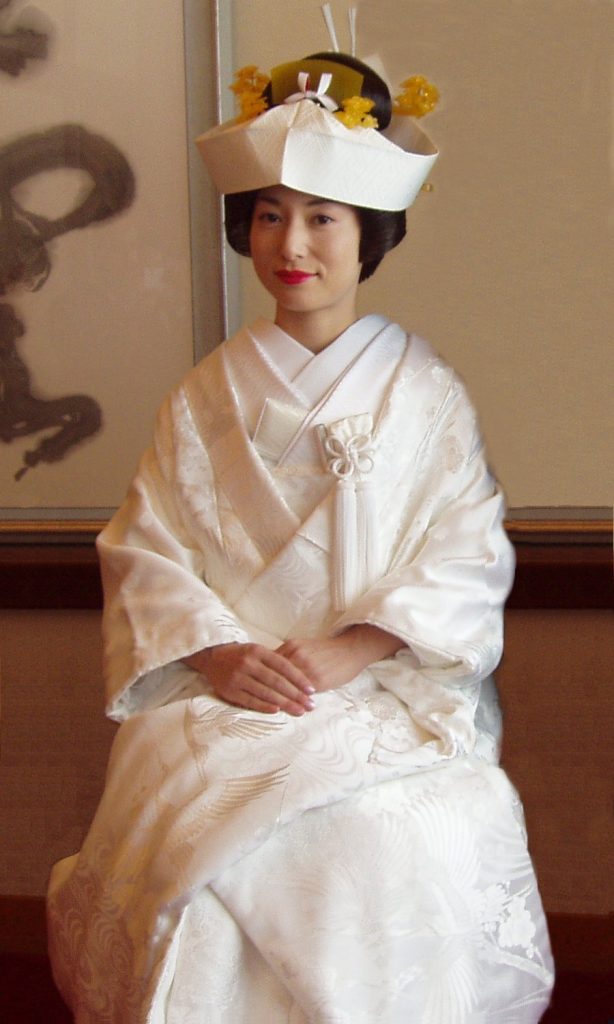
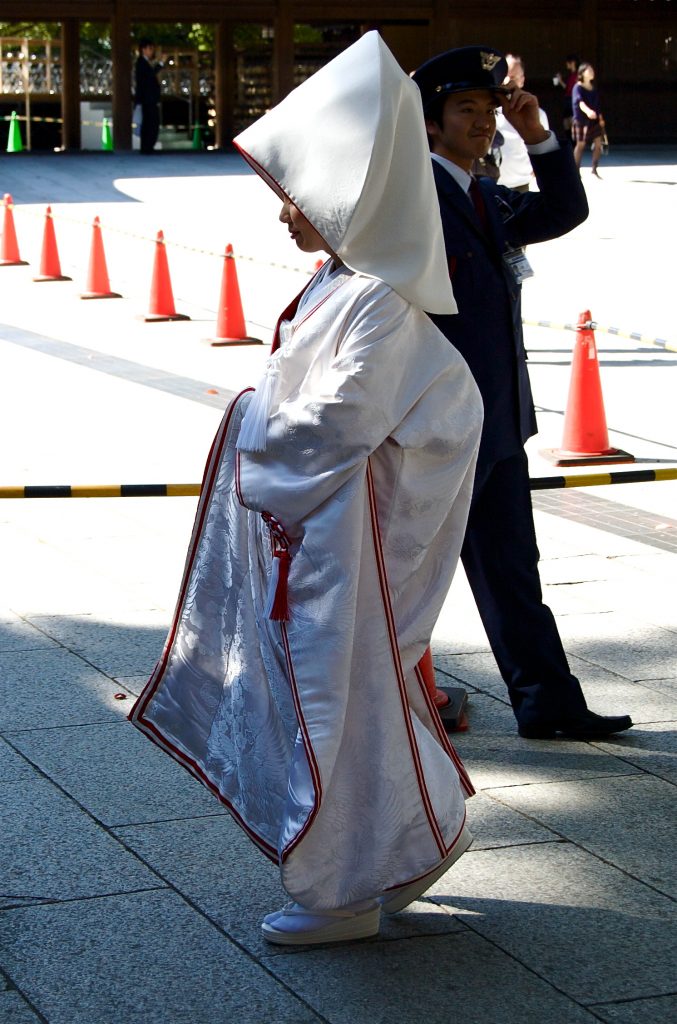
Japanese Marriage Customs
Guests also receive a wedding invitation typically by postal mail. In the envelope, a postcard is there so that the guest can reply whether they are going to attend or not, which is expected to be done within a certain timeframe. Filling out the postcard in the correct manner is highly important and there are several rules about it.
According to ancient Japanese wedding rituals, only close family members and nakodo or matchmakers attended the wedding ceremony. However, in the modern day, this wedding tradition has been changing. Many couples do not use matchmakers and they use shrines that allow distant family members and close friends of the bride and groom to attend the ceremony; although the number of guests is still limited so that the wedding ceremony is private. The couple also doesn’t have a bridal party.
Japanese culture wedding traditions are highly unique and steeped in meaning and symbolism. The illustrious and rich heritage of Japan is visible during ceremonies like weddings, funerals, prayers, etc. These days, most brides and grooms mix these traditional elements with modern customs as a way of honouring their culture and acknowledging the future.




